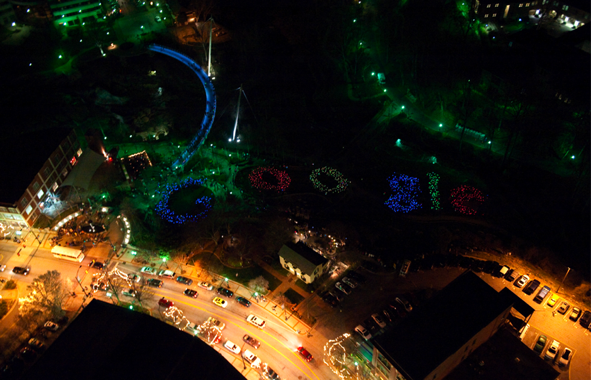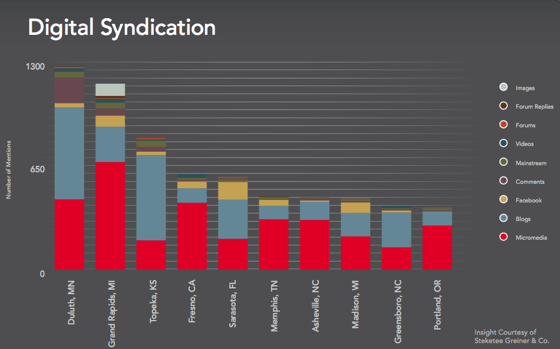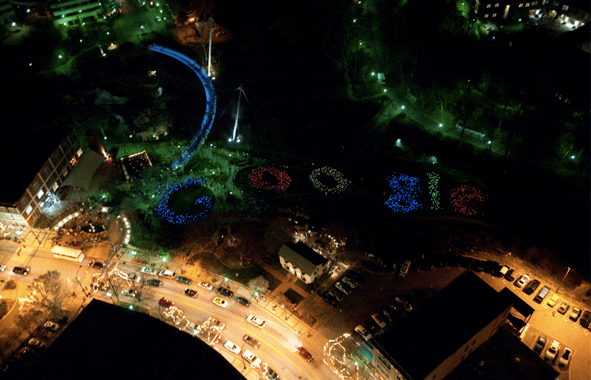
A month ago, Google announced that it would be deploying its own “experimental” fiber-optic network to U.S. communities that would be 20 times faster than residential fiber optic services offered today. As soon as the announcement was made, cities of all sizes began vying for the opportunity to be Google’s guinea pig, going through great lengths to be chosen for the trial. Mayors signed proclamations and jumped into freezing lakes, city employees were forced to sing Google-come-hither hymns, some cities even pulled out the glow sticks.
It’s understandable why cities would want to be part of Google’s broadband plan. Not only will the broadband network be completely free for the city (only the consumers using the services will be charged), but the 1Gb/sec fiber is roughly 100 times faster than what most Americans get today for Internet speeds. That’s especially true in rural areas.
Many of the municipal displays of Google love border on the ridiculous. But why wouldn’t a city want Google’s stamp of approval with a side of super-fast broadband speeds? Tomorrow is the deadline for cities to submit applications and here’s a roundup of the various entertaining strategies cities have adopted to catch Google’s attention.
One of the first cities to throw its hat into the ring was Topeka, Kansas. The city’s mayor signed a proclamation that for March, Topeka will be known as “Google, Kansas” in honor of the search giant. In an attempt at parody, the mayor of Deluth, Minnesota mandated that all firstborn males be named “Google Fiber” and all firstborn females be named “Googlette Fiber.”
Baltimore (which happens to be my hometown) took a more bureaucratic approach to the application process by appointing a “Google Czar.” The city chose Tom Loveland, CEO of a local tech company, Mind Over Machines, to take the position. Baltimore also launched a website, BmoreFiber, which states in huge, bold letters, “Ask Google to Invest Billions in Baltimore’s Future.“
California’s Santa Monica used its entertainment talent and posted a YouTube video with a love ballad written and performed by part time city employee and aspiring songwriter Jeff Stevens. Palo Alto also used song and dance to appeal to Google; with city residents and employees videotaping themselves dancing to the Village People’s YMCA.
Oklahoma City took a more tech-friendly approach, crowdsourcing ideas for catching Google’s attention. North Carolina’s Asheville passed a proclamation that 1:30 PM EST today would be the city’s “Google Moment.” At that time, everyone in the city is encouraged to submit online applications on Google’s broadband site. At the same time. Greenville, South Carolina recruited citizens to spell out Google with color coded glow sticks. Peoria, Illinois created this cartoon.
Other cities have incorporated their natural resources and even animals into their bids to win Google’s attention. In addition to his parody video, Deluth’s mayor also jumped in the icy Lake Superior in the middle of winter. The mayor of Sarasota, Florida jumped into a shark tank to promote the city and renamed the city “Google Island.” Madison, Wisconsin (a state that is famous for its dairy products), has created a “Google Flavored” ice cream that includes M&M’s in the same colors as Google’s logo and granola to represent fiber.

So who will win the golden ticket? Digital communications and measurement firm Steketee Greiner and Co. has been analyzing over 90 cities across the US, measuring activity around online conversation, digital syndication, presence, involvement and activation, to determine which city will come out on top. At the moment, Steketee reports that Duluth seems to be in first place, with Grand Rapids taking second, Topeka coming in third place, Fresno in fourth place and Sarasota rounding out with the fifth spot.
Of course, the U.S. government has its own ten year broadband plan, which among other goals, wants to subsidize broadband connections in rural areas, and bring 1-gigabit connections to every community in the U.S. While this is a worthy and necessary set of goals, there are a number of flaws with the strategy, namely that the plans aren’t ambitious enough. For example, under the new plan, some 85% of homes covered would have no choice when it comes to a provider, possibly locking users into higher prices because of a lack of competition.
Google represents a small beacon of hope in that it could provide a concrete example for other communities or broadband providers to follow. While initially the search giant is only outfitting 500,000 homes, if the plan works, Google could end up expanding the project nationally. And while it’s still unclear when Google will roll out its test implementations, the expectation is that it won’t take ten years.
Photo by Mike Bergen (AidJoy.org for the City of Greenville)
